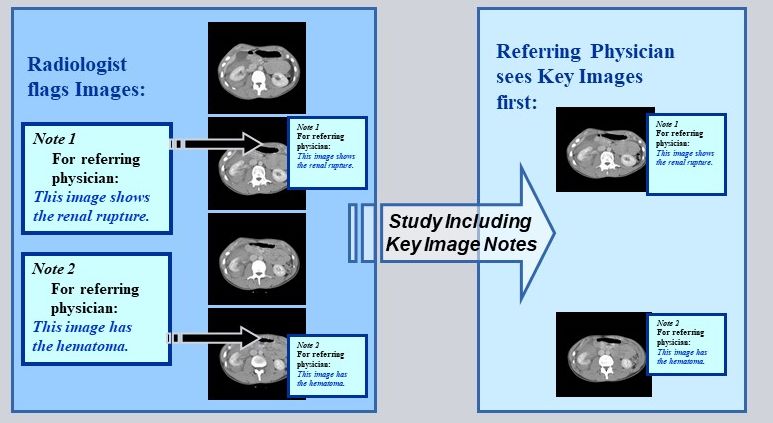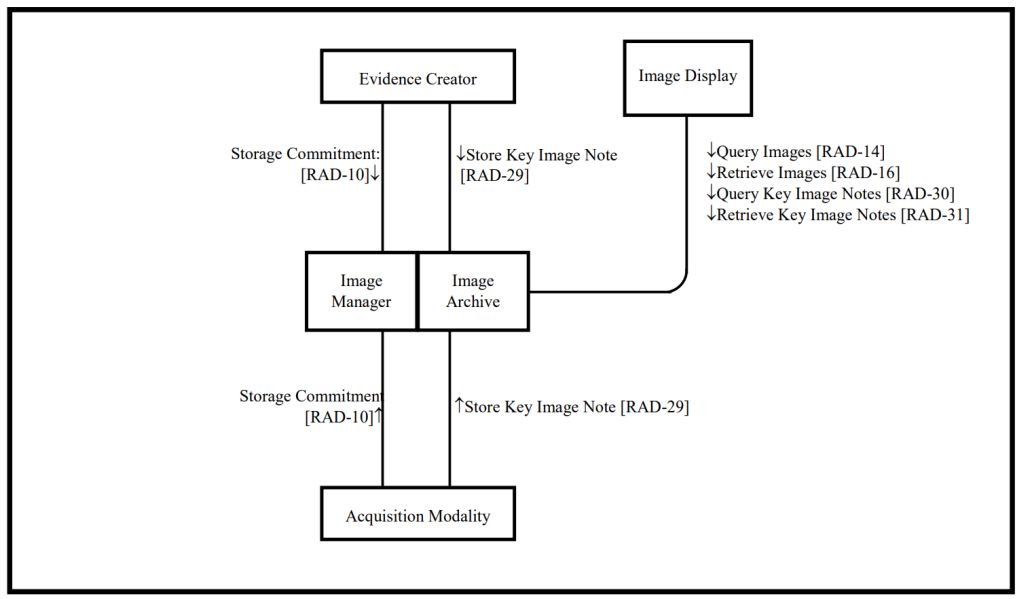Difference between revisions of "Key Image Note"
(No difference)
| |
Latest revision as of 09:32, 21 January 2020
Key Image Note (KIN) lets users flag images as significant (e.g. for referring, for surgery, etc.) and add notes.
Summary
The Key Image Note Integration Profile enables a user to flag as significant one or more images in a study by referencing them in a note linked with the study. This note includes a title stating the purpose of the flagged images and a user comment field. These notes will be properly stored, archived and displayed as the images move among systems that support the profile. Physicians may attach key image notes to images for a variety of purposes: referring physician access, teaching files selection, consultation with other departments, and image quality issues, to name a few.
Benefits
The Key Image Note profile provides
- a means to attach "electronich post-it(tm)" notes to images to improve communication between different participants in the imaging workflow e.g
- between radiologist and technologists to communicate regarding quality issues
- between radiologists and other departments involved in patient care, like surgery planning
- between radiologists and other healthcare providers for use in interdisplinary case discussions
- between radiologists and refering physicians
- a query mechanism to ease access to key images for specific uses (e.g. for use in teachning files, for surgery, for refering phyhsicians, to investigate quality issues ...
Details
The Key Image Note Profile specifies transactions that allow a user to mark one or more images in a study as significant by attaching to them a note managed together with the study using the DICOM Key Object Selection Document. This note includes a title stating the purpose of marking the images and a user comment field. Physicians may attach Key Image Notes to images for a variety of purposes: referring physician access, teaching files selection, consultation with other departments, and image quality issues, etc.
Systems Affected
- PACS systems may store, manage, and/or display Evidence Documents.
- Display systems may query, retrieve and display Evidence Documents.
- Reporting workstations may retrieve, process and include details from Evidence Documents in reports
Actors & Transactions:
Specification
Profile Status: Final Text
Documents:
IHE Radiology Technical Framework:
Underlying Standards:
See Also
Related Profiles
- Reporting Workflow [RWF] may use Key Image Notes as inputs to the reporting process.
- Simple Image & Numeric Reports [SINR] may include Key Images in the report.
- Cross-enterprise Document Sharing for Imaging [XDS-I] can be used to share Key Images between sites over a network.
- Portable Data for Imaging [PDI] can store Key Images on media such as CDs.
This page is based on the Profile Template

